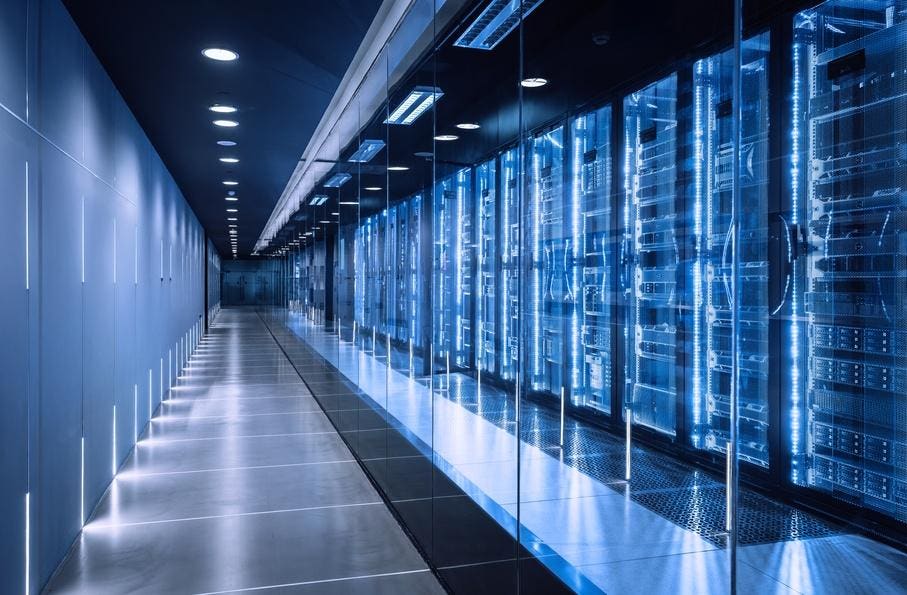Innovation and Technology
AI and Automation in Society

AI and automation for impact are revolutionizing the way we live and work. From smart homes to intelligent transportation systems, AI and automation are transforming society in profound ways. As we embark on this journey, it’s essential to understand the benefits and challenges of AI and automation and how they can be harnessed for the greater good.
What is AI and Automation?
AI, or Artificial Intelligence, refers to the development of computer systems that can perform tasks that typically require human intelligence, such as learning, problem-solving, and decision-making. Automation, on the other hand, refers to the use of technology to control and operate machines and systems. When combined, AI and automation enable the creation of intelligent systems that can learn, adapt, and interact with their environment.
Types of AI and Automation
There are several types of AI and automation, including machine learning, natural language processing, computer vision, and robotics. Machine learning, for example, enables systems to learn from data and improve their performance over time. Natural language processing, on the other hand, allows systems to understand and generate human-like language.
Applications of AI and Automation
AI and automation have numerous applications across various industries, including healthcare, finance, transportation, and education. In healthcare, AI and automation can be used to analyze medical images, diagnose diseases, and develop personalized treatment plans. In finance, AI and automation can be used to detect fraud, optimize investment portfolios, and provide personalized financial advice.
Smart Homes and Cities
AI and automation are also transforming the way we live and work in our homes and cities. Smart homes, for example, can be equipped with intelligent systems that can learn and adapt to our habits and preferences. Smart cities, on the other hand, can use AI and automation to optimize energy consumption, traffic flow, and waste management.
Benefits of AI and Automation
The benefits of AI and automation are numerous and significant. They include increased efficiency, productivity, and accuracy, as well as improved safety, security, and decision-making. AI and automation can also enable new business models, products, and services, creating new opportunities for growth and innovation.
Job Creation and Displacement
While AI and automation have the potential to displace certain jobs, they also create new ones. According to a report by the World Economic Forum, by 2022, AI and automation are expected to create over 130 million new jobs globally, while displacing around 75 million jobs. However, it’s essential to ensure that workers are equipped with the skills needed to adapt to an AI-driven economy.
Challenges and Limitations
Despite the many benefits of AI and automation, there are also challenges and limitations that need to be addressed. These include issues related to bias, transparency, and accountability, as well as concerns around job displacement, inequality, and cybersecurity.
Addressing Bias and Inequality
To address bias and inequality, it’s essential to ensure that AI and automation systems are designed and developed with fairness and transparency in mind. This can be achieved through the use of diverse and representative data sets, as well as regular auditing and testing for bias.
Future of AI and Automation
The future of AI and automation is exciting and rapidly evolving. As AI and automation continue to advance, we can expect to see even more significant transformations across various industries and aspects of our lives. From intelligent transportation systems to personalized medicine, the potential applications of AI and automation are vast and promising.
Human-AI Collaboration
As AI and automation become increasingly integrated into our lives, it’s essential to ensure that humans and machines collaborate effectively. This can be achieved through the development of intuitive interfaces, transparent decision-making processes, and ongoing education and training programs.
Conclusion
In conclusion, AI and automation have the potential to transform society in profound ways, from improving healthcare and education to enhancing transportation and energy efficiency. While there are challenges and limitations that need to be addressed, the benefits of AI and automation are significant and far-reaching. As we continue to develop and deploy AI and automation technologies, it’s essential to prioritize fairness, transparency, and accountability, ensuring that these technologies are harnessed for the greater good.
Frequently Asked Questions (FAQs)
What is AI, and how does it work?
AI, or Artificial Intelligence, refers to the development of computer systems that can perform tasks that typically require human intelligence, such as learning, problem-solving, and decision-making. AI works by using algorithms and data to enable machines to learn, adapt, and interact with their environment.
Will AI and automation replace human workers?
While AI and automation have the potential to displace certain jobs, they also create new ones. According to a report by the World Economic Forum, by 2022, AI and automation are expected to create over 130 million new jobs globally, while displacing around 75 million jobs.
How can I prepare for an AI-driven economy?
To prepare for an AI-driven economy, it’s essential to develop skills that are complementary to AI and automation, such as creativity, critical thinking, and problem-solving. Additionally, ongoing education and training programs can help workers adapt to new technologies and job requirements.
What are the potential risks and challenges of AI and automation?
The potential risks and challenges of AI and automation include issues related to bias, transparency, and accountability, as well as concerns around job displacement, inequality, and cybersecurity. To address these challenges, it’s essential to prioritize fairness, transparency, and accountability in the development and deployment of AI and automation technologies.
How can I stay updated on the latest developments in AI and automation?
To stay updated on the latest developments in AI and automation, it’s essential to follow reputable sources, such as research institutions, industry leaders, and technology publications. Additionally, attending conferences, workshops, and online courses can provide valuable insights and networking opportunities.
Innovation and Technology
Amazon Spending $13 Billion On AI Data Centers In Australia

Introduction to Amazon’s Investment in Australia
Amazon will invest A$20 billion ($13 billion) in the five years through 2029 to build data centers in Australia amid growing demand for cloud computing and artificial intelligence applications. The spending—the biggest investment from a global technology provider in Australia—will hasten AI adoption across the country, boost productivity and modernize the IT infrastructure for Australian entities, Amazon said in a statement over the weekend.
Economic Impact and Job Creation
“The investment will generate economic opportunity for Australians, including skilled jobs and infrastructure that can support complex AI and supercomputing applications,” Australian Prime Minister Anthony Albanese said in the statement. Australia’s Department of Industry, Science and Resources estimates AI and automation will contribute up to A$600 billion annually to the nation’s GDP by 2030.
Empowering Innovation at Scale
“AI is a once-in-a-generation transformation, and Amazon is pleased to be empowering all Australians to innovate at scale through this investment,” Matt Garman, CEO of Amazon Web Services, said in the statement. This investment is a significant step towards supporting the growth of AI and cloud computing in Australia.
Supporting Infrastructure for Data Centers
To support the enlarged cloud infrastructure’s power needs, Amazon is investing in three new solar farms in Victoria and Queensland to provide more than 170-megawatts of electricity to the data centers. When completed, Amazon will have 11 solar farms across Australia with a combined capacity of 1.4 million megawatt hours, enough to power about 290,000 Australian homes each year, Amazon said.
History of Amazon’s Investment in Australia
Amazon first invested in Australia in 2012 with the opening of the AWS Asia Pacific (Sydney) Region hub. Since then it has built several new facilities in Melbourne, Perth and Sydney. The e-commerce giant has also trained more than 400,000 people in the country, equipping them with digital skills to support generative AI programs.
Conclusion
Amazon’s significant investment in Australia’s data centers and renewable energy infrastructure underscores the company’s commitment to supporting the country’s digital transformation. This investment is expected to have a profound impact on Australia’s economy, creating new job opportunities and driving innovation in AI and cloud computing.
FAQs
- Q: How much will Amazon invest in Australia’s data centers?
A: Amazon will invest A$20 billion ($13 billion) in the five years through 2029. - Q: What is the expected impact of Amazon’s investment on Australia’s GDP?
A: AI and automation are estimated to contribute up to A$600 billion annually to the nation’s GDP by 2030. - Q: How will Amazon support the power needs of its data centers?
A: Amazon is investing in three new solar farms in Victoria and Queensland to provide more than 170-megawatts of electricity to the data centers. - Q: How many people has Amazon trained in digital skills in Australia?
A: Amazon has trained more than 400,000 people in the country, equipping them with digital skills to support generative AI programs.
Innovation and Technology
Strategic Subtraction

Introduction to Strategic Subtraction
In today’s fast-paced and ever-changing business landscape, companies are constantly seeking ways to stay ahead of the competition and adapt to turbulent times. One strategy that has gained attention in recent years is "strategic subtraction," a concept that involves intentionally removing or simplifying elements of a business to improve its overall performance and resilience.
What is Strategic Subtraction?
Strategic subtraction is a deliberate approach to eliminating non-essential components, processes, or activities that do not contribute significantly to a company’s core objectives. This can include anything from streamlining product lines and simplifying operational processes to reducing the number of employees or closing underperforming locations. The goal of strategic subtraction is to create a more agile, focused, and efficient organization that is better equipped to navigate uncertainty and capitalize on new opportunities.
Benefits of Strategic Subtraction
The benefits of strategic subtraction are numerous and can have a significant impact on a company’s bottom line. By eliminating unnecessary complexity and distractions, businesses can:
- Improve operational efficiency and reduce costs
- Enhance their ability to innovate and adapt to changing market conditions
- Increase their focus on core competencies and high-priority initiatives
- Strengthen their competitive position and improve customer satisfaction
Implementing Strategic Subtraction
Implementing strategic subtraction requires careful planning, analysis, and execution. It involves:
- Identifying Non-Essential Elements: Conducting a thorough review of all business operations, products, and services to identify areas that do not align with the company’s strategic objectives or that are not generating sufficient value.
- Assessing Impact: Evaluating the potential impact of subtracting identified elements, including financial, operational, and customer implications.
- Developing a Subtraction Strategy: Creating a detailed plan for how subtraction will be implemented, including timelines, resource allocation, and communication strategies.
- Executing the Plan: Carrying out the subtraction strategy, which may involve restructuring, divestitures, or process simplification.
Overcoming Challenges
While strategic subtraction can be a powerful tool for improving business performance, it also presents several challenges. These can include:
- Resistance to Change: Employees and stakeholders may resist changes, especially if they involve job losses or significant alterations to business operations.
- Uncertainty and Risk: There is always a risk that subtracting certain elements could have unintended consequences, such as losing key customers or damaging the company’s reputation.
- Cultural Impact: Strategic subtraction can affect a company’s culture, potentially leading to demotivation or a loss of trust among employees if not managed carefully.
Case Studies and Examples
Several companies have successfully applied strategic subtraction to improve their performance. For example, a retail chain might decide to close underperforming stores to focus on more profitable locations. A technology firm might simplify its product lineup to concentrate on a fewer number of high-margin products. These actions can lead to significant improvements in efficiency, profitability, and competitiveness.
Best Practices for Strategic Subtraction
To maximize the benefits of strategic subtraction, companies should follow best practices such as:
- Engaging in thorough analysis and planning
- Communicating clearly with stakeholders
- Focusing on core competencies and high-value activities
- Monitoring and adjusting the subtraction strategy as needed
Conclusion
Strategic subtraction is a valuable approach for businesses looking to navigate turbulent times by simplifying operations, reducing costs, and enhancing focus on core objectives. By understanding the principles of strategic subtraction, identifying areas for improvement, and carefully planning and executing subtraction strategies, companies can position themselves for greater success and resilience in an ever-changing business environment.
FAQs
- Q: What is the primary goal of strategic subtraction?
A: The primary goal is to improve a company’s performance and resilience by eliminating non-essential elements. - Q: How do I identify what to subtract from my business?
A: Conduct a thorough review of your operations, products, and services to identify areas that do not align with your strategic objectives or generate insufficient value. - Q: What are the potential risks of strategic subtraction?
A: Risks include resistance to change, uncertainty, potential unintended consequences, and cultural impact. - Q: Can strategic subtraction apply to any business?
A: Yes, the principles of strategic subtraction can be applied to businesses of all sizes and industries, though the specific approaches may vary.
Innovation and Technology
New Ransomware Threatens To Destroy Your Files Forever

Introduction to Anubis Ransomware
As if the threat from high-profile ransomware actors wasn’t critical enough, with the Federal Bureau of Investigation issuing warnings as attacks skyrocket, and ransoms follow suit with, on occasion, ridiculously eye-watering payments demanded, a new ransomware-as-a-service platform has just upped the stakes once again. This time, as well as stealing your data and encrypting your files, the Anubis attackers install a custom wiper that can permanently and irrevocably destroy them at the whim of the hackers!
The Anubis Ransomware-As-A-Service Threat
There has been some notable success in disrupting ransomware attackers of late, with devastating strikes by the FBI and Secret Service as well as hackers attacking some of the leading organized ransomware criminal groups. The problem is that as one group is disrupted or disbands, another rises to take their place in the cybercriminal hierarchy. And these groups often bring new and worrying attack tactics with them. Such is the case with the Anubis ransomware-as-a-service platform.
“Anubis is an emerging ransomware-as-a-service group that adds a destructive edge to the typical double-extortion model with its file-wiping feature,” Trend Micro threat researchers Maristel Policarpio, Sarah Pearl Camiling and Sophia Nilette Robles, said in a new report that takes a deep technical dive into the workings of the latest ransomware threat.
In an attempt to both set itself apart from other ransomware-as-a-service operations and twist the victim extortion leverage knife even further, Anubis employs a file wiper that, the researchers said, is “designed to sabotage recovery efforts even after encryption.” This wiper uses a /WIPEMODE parameter to permanently delete the file contents and prevent any attempts at recovery.
Mitigating The Anubis Ransomware Threat
We know that the Anubis attackers employ a number of methods to deploy the ransomware and execute its feature set, including phishing, command line execution and privilege escalation, not to mention the file-wiping capabilities already discussed. Mitigation strategies, therefore, are relatively straightforward.
Let’s start with the big one, to mitigate the file-wiper impact. Backup and backup now. Ensuring that you have current offline and even off-site backups is your best defense against the Anubis eraser ransomware.
The remainder are nothing new either, as Trend Micro points out:
- Avoid downloading attachments, clicking on links, or installing applications unless the source is verified and trusted.
- Implement web filtering to restrict access to known malicious websites.
- Limit administrative rights and access privileges to employees only when necessary.
- Regularly review and adjust permissions to minimize the risk of unauthorized access.
- Ensure that all security software is updated regularly and conduct periodic scans to identify vulnerabilities.
Do all of this and, suddenly, the Anubis ransomware threat becomes a lot less scary. Which isn’t the same as saying it can be dismissed, as that would be a very poor and dangerous business decision indeed.
Conclusion
The Anubis ransomware threat is a serious one, with its ability to permanently destroy files making it a particularly nasty piece of malware. However, by taking the necessary precautions and implementing robust security measures, individuals and organizations can significantly reduce the risk of falling victim to this threat. It is essential to stay vigilant and proactive in the face of evolving cyber threats like Anubis.
FAQs
Q: What is Anubis ransomware?
A: Anubis is a ransomware-as-a-service platform that steals data, encrypts files, and installs a custom wiper to permanently delete file contents.
Q: How does Anubis ransomware spread?
A: Anubis attackers use methods such as phishing, command line execution, and privilege escalation to deploy the ransomware.
Q: How can I protect myself from Anubis ransomware?
A: To mitigate the threat, ensure you have current offline and off-site backups, avoid downloading attachments or clicking on links from unverified sources, implement web filtering, limit administrative rights, and regularly update security software.
Q: What is the best defense against Anubis eraser ransomware?
A: The best defense is to have current offline and off-site backups, which can help restore files in case of an attack.
-

 Career Advice6 months ago
Career Advice6 months agoInterview with Dr. Kristy K. Taylor, WORxK Global News Magazine Founder
-

 Diversity and Inclusion (DEIA)6 months ago
Diversity and Inclusion (DEIA)6 months agoSarah Herrlinger Talks AirPods Pro Hearing Aid
-

 Career Advice6 months ago
Career Advice6 months agoNetWork Your Way to Success: Top Tips for Maximizing Your Professional Network
-

 Changemaker Interviews5 months ago
Changemaker Interviews5 months agoUnlocking Human Potential: Kim Groshek’s Journey to Transforming Leadership and Stress Resilience
-

 Diversity and Inclusion (DEIA)6 months ago
Diversity and Inclusion (DEIA)6 months agoThe Power of Belonging: Why Feeling Accepted Matters in the Workplace
-

 Global Trends and Politics6 months ago
Global Trends and Politics6 months agoHealth-care stocks fall after Warren PBM bill, Brian Thompson shooting
-

 Global Trends and Politics6 months ago
Global Trends and Politics6 months agoUnionization Goes Mainstream: How the Changing Workforce is Driving Demand for Collective Bargaining
-

 Training and Development6 months ago
Training and Development6 months agoLevel Up: How Upskilling Can Help You Stay Ahead of the Curve in a Rapidly Changing Industry









